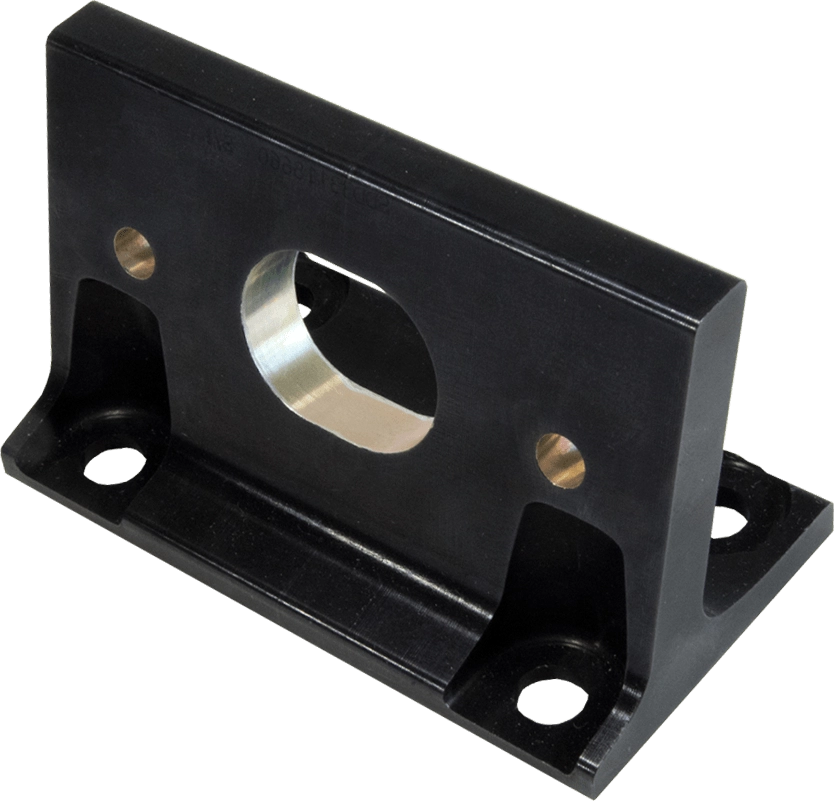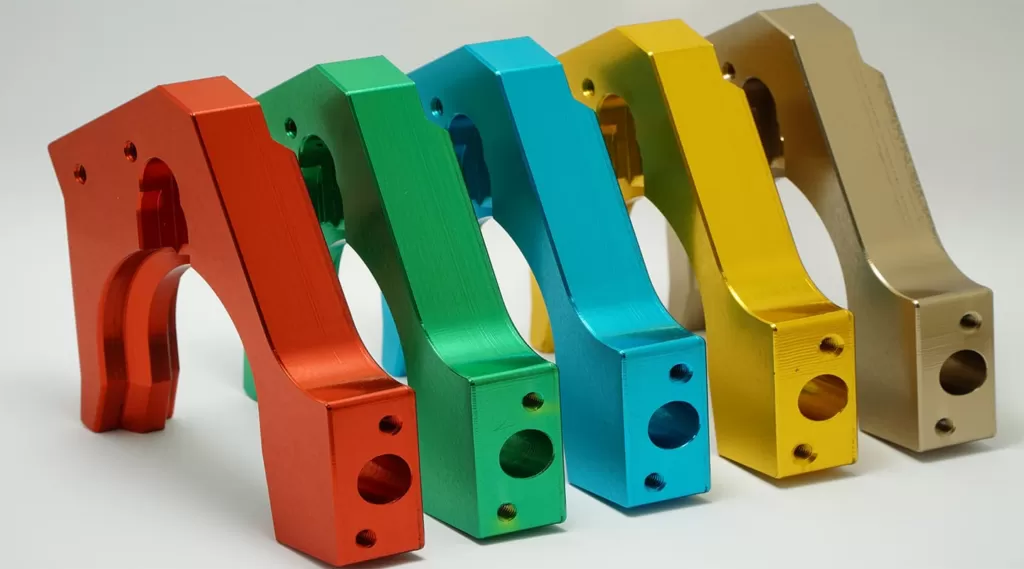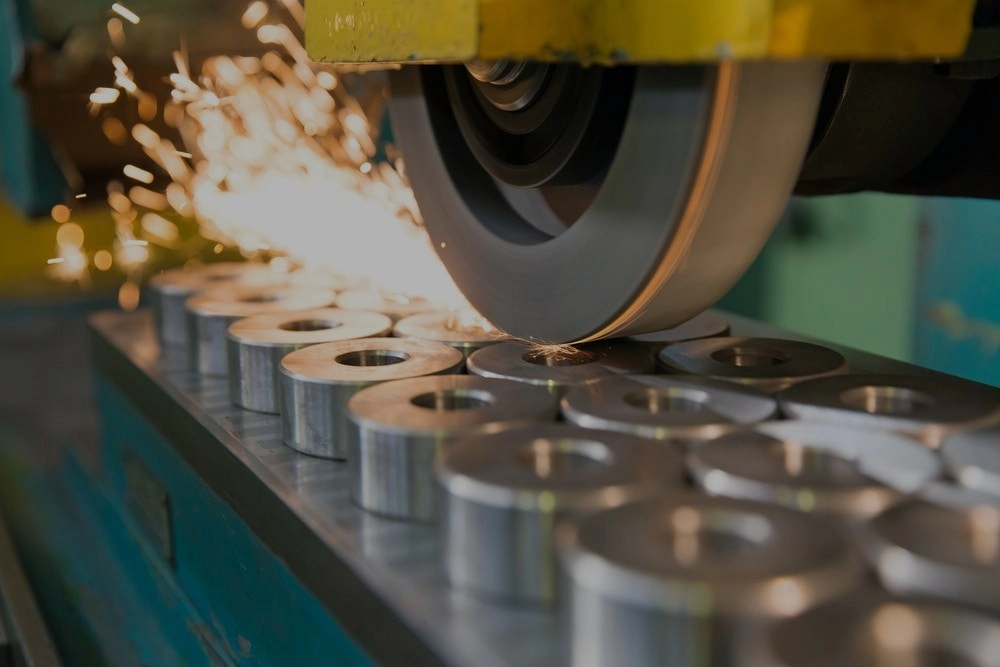Are you trying to decide between Type II and Type III anodizing for your CNC machined parts? Choosing the right anodizing process can transform your aluminum components, boosting durability and aesthetics for your project’s success.
As a CNC machining expert, I know firsthand how critical the right surface finish is for performance and longevity. At HYCNC, we’ve helped countless manufacturers nail their anodizing choice with real-world expertise.
In this guide, you’ll uncover the key differences between Type II anodizing and Type III anodizing, their benefits, and how to pick the perfect one for your needs—whether it’s vibrant colors or hardcore durability.
Let’s dive in!
What is Anodizing
Anodizing is an electrochemical process that enhances the natural oxide layer on aluminum surfaces. This treatment creates a tough, corrosion-resistant coating that improves durability and wear resistance without changing the metal’s core properties.
Benefits of Anodizing
- Corrosion resistance: Protects aluminum from rust and environmental damage
- Wear resistance: Adds a hard surface that withstands scratches and abrasion
- Aesthetic appeal: Offers a range of anodizing color options for decorative finishes
- Improved adhesion: Provides a better surface for painting, adhesives, and printing
- Low maintenance: Requires minimal upkeep, extending the life of parts and products
Common Applications
Anodizing is widely used in industries requiring durable, high-quality aluminum finishes, including:
- Aerospace and automotive parts
- Consumer electronics
- Architectural components
- Sporting goods
- CNC machining finishes to enhance precision parts
The process works well for both practical protection and enhancing visual appeal, making anodizing a popular surface treatment across many sectors.
Type II Anodizing The Versatile Choice
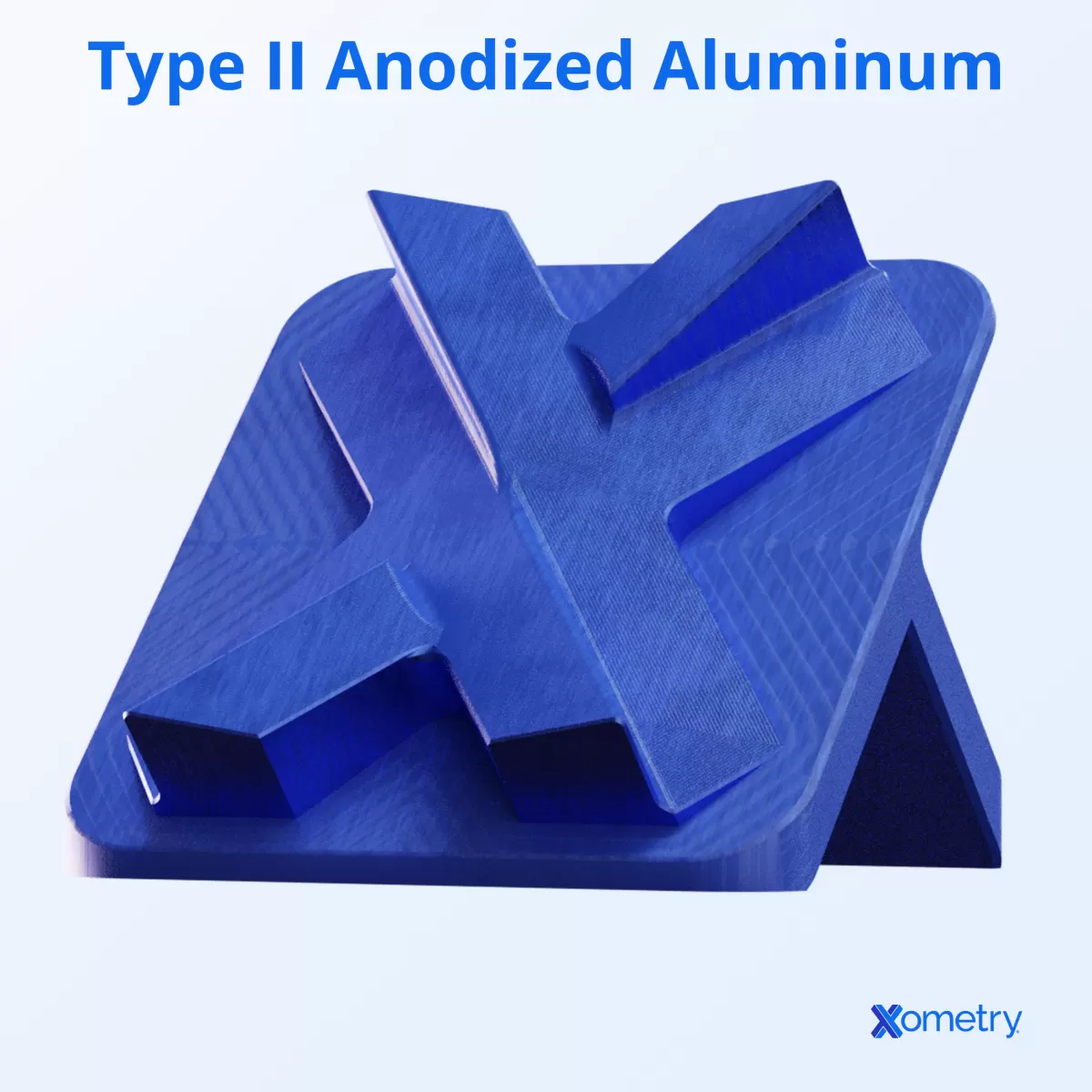
Type II anodizing, often called sulfuric acid anodizing, is the most common method used for aluminum anodizing. The process involves immersing aluminum parts in a sulfuric acid bath, where an oxide coating forms naturally on the surface. This layer is porous and can absorb dyes, making it popular for adding color to aluminum parts.
Key Characteristics
- Coating Thickness: Typically ranges from 0.0001 to 0.001 inches (2.5 to 25 microns).
- Porous Surface: Allows for easy dyeing and coloring options.
- Corrosion Resistance: Offers good protection against corrosion and wear.
- Good Surface Finish: Provides a smooth, aesthetically pleasing finish.
Applications
Type II anodizing is widely used across many industries, including:
- Automotive parts
- Consumer electronics
- Architectural components
- Decorative items
- CNC machined parts requiring color coding or branding
Advantages
- Versatility: Works well on various aluminum alloys.
- Aesthetic options: Can be dyed in a range of colors for branding or visual appeal.
- Cost-effective: Less expensive and faster than type III anodizing.
- Improved corrosion resistance: Adds a protective layer suitable for many environments.
Limitations
- Less durable: Thinner coating means it’s less wear-resistant than hardcoat anodizing.
- Lower abrasion resistance: Not ideal for parts exposed to heavy mechanical wear.
- Dimensional changes: Though minimal, the anodizing layer slightly increases the thickness and may affect tight tolerance parts.
Type II anodizing offers a balanced option for projects that need good corrosion resistance and color options without the higher cost and longer processing time of type III anodizing. For more about aluminum anodizing and surface finishes, check out our detailed guide on anodizing aluminum and its uses in laser cutting.
Type III Anodizing The Durable Hardcoat Option
Type III anodizing, also known as hardcoat anodizing, is designed for maximum wear and corrosion resistance. The process uses sulfuric acid anodizing but with colder temperatures and higher voltages, which creates a much thicker and denser oxide layer compared to Type II.
Process Overview
- Performed at lower temperatures (around 32°F or 0°C)
- Uses higher current densities to build a thicker coating
- Results in a harder, more wear-resistant surface
Key Characteristics
- Coating thickness ranges from 0.0012 to 0.003 inches (30 to 75 microns)
- Extremely hard and abrasion-resistant
- Excellent corrosion protection, especially in harsh conditions
- Limited color options, usually natural or dark gray/black shades
Applications
- Aerospace parts that face extreme wear
- Military equipment requiring MIL-A-8625 standards
- Industrial machinery components
- Automotive parts with heavy friction exposure
Advantages
- Superior wear and corrosion resistance
- Great for parts exposed to aggressive environments
- Maintains dimensional stability despite thicker coating
- Long-lasting protective finish
Limitations
- More expensive than Type II anodizing
- Fewer color and aesthetic options
- Slightly longer processing time
- Requires tighter process control to avoid surface cracking
Type III anodizing is the go-to choice when durability and protection are the top priorities. It’s perfect for CNC machining finishes that must hold up under tough conditions and provide reliable, long-term performance.
Type II vs Type III A Side by Side Comparison
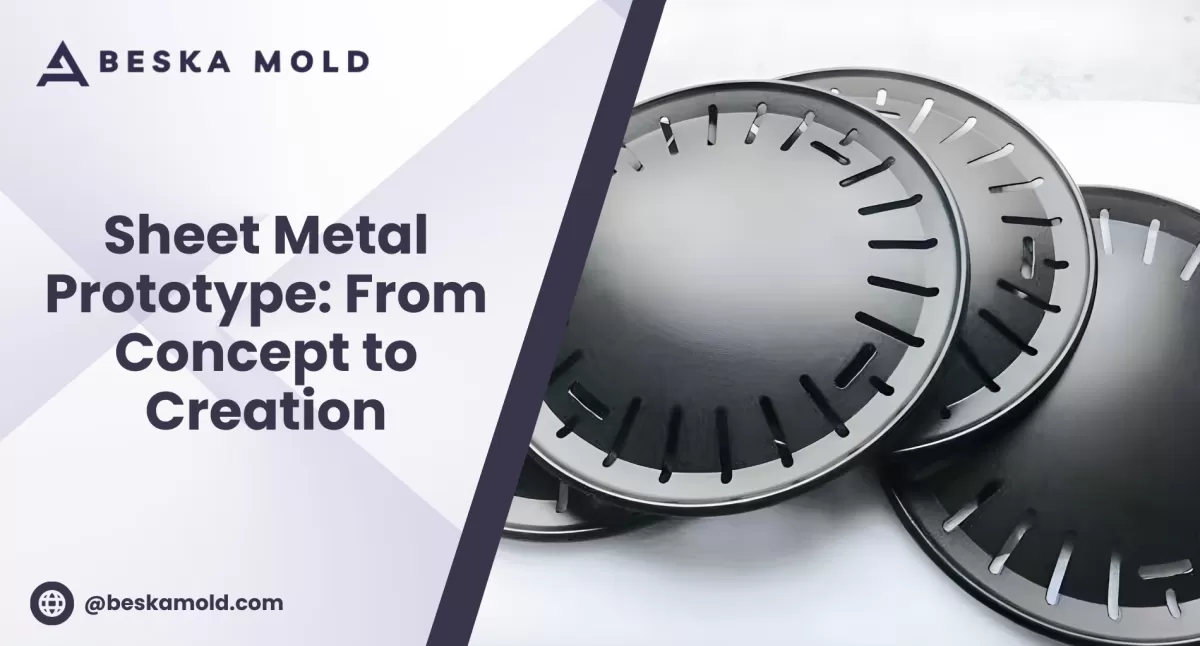
When choosing between type II and type III anodizing, it helps to see how they stack up on key factors:
Thickness
- Type II: Usually between 0.6 to 1.0 mils (15-25 microns).
- Type III: Much thicker, ranging from 1.5 to 4.0 mils (40-100 microns).
Durability
- Type II: Good corrosion resistance and moderate wear protection.
- Type III: Superior hardness and wear resistance, ideal for heavy-duty use.
Aesthetic Options
- Type II: Offers a wider range of color dyeing choices and finishes.
- Type III: Limited color options, mainly natural or black hardcoats, due to thicker layer.
Cost
- Type II: Generally more affordable because of shorter processing times and less material use.
- Type III: Higher cost reflecting longer process and extra materials.
Processing Time
- Type II: Faster turnaround, suitable for projects with tighter timelines.
- Type III: Takes longer due to thicker coating and more precise control.
Dimensional Impact
- Type II: Minimal increase in thickness, less effect on tight tolerances.
- Type III: Noticeable thickness can affect part dimensions and requires careful design consideration.
Table
| Feature | Type II Anodizing | Type III Anodizing |
|---|---|---|
| Thickness | 0.6 – 1.0 mils (15-25 microns) | 1.5 – 4.0 mils (40-100 microns) |
| Durability | Moderate wear & corrosion | High wear & corrosion resistance |
| Color Options | Wide range | Limited (natural, black) |
| Cost | Lower | Higher |
| Processing Time | Shorter | Longer |
| Dimensional Impact | Minimal | Significant |
This quick comparison should make it easier to decide which anodizing type fits your project needs, whether you want more color options or tougher, longer-lasting protection.
How to Choose the Right Anodizing Type for Your Project
Picking the right anodizing type comes down to what your project really needs. Here’s how to make the best choice:
Identify Project Requirements
Start by figuring out the main goal. Do you need heavy-duty corrosion resistance or just an attractive surface finish? Type II anodizing works well for decorative and moderate protection, while Type III (hardcoat anodizing) is better for parts that deal with serious wear and tear.
Material Compatibility
Most anodizing is done on aluminum, but different alloys might respond differently. Ensure the type of aluminum you’re using plays nicely with either Type II or Type III anodizing for the best results.
Budget and Timeline
Type II anodizing generally costs less and has a faster turnaround. If you’re on a tight schedule or budget, this might be the way to go. Type III anodizing takes longer and costs more, but offers superior durability.
Industry Standards
Certain industries have strict specs, like aerospace or military, which often call for Type III anodizing to meet MIL-A-8625 standards. Check if your project requires compliance with any such standards.
Consult Experts
When in doubt, reach out to anodizing specialists. They can provide tailored advice based on your specific needs, materials, and goals. Getting expert input can save time and money, ensuring your project ends up just right.
Making the right choice between Type II and Type III anodizing is key to getting the performance and look you want without overspending or waiting too long.
Why Choose HYCNC for Anodizing Services
When it comes to aluminum anodizing, HYCNC stands out for several reasons. Our expertise in CNC machining and surface finishes ensures your parts get the right Type II or Type III anodizing treatment to meet your project needs. We follow strict quality assurance protocols so you get consistent, durable, and corrosion-resistant aluminum parts every time.
We also understand that every project is unique. That’s why we offer customization options—whether you need specific anodizing thicknesses, color variations, or hardcoat anodizing for wear-resistant coatings. Our flexible approach lets you get exactly what you want without extra hassle.
Speed matters in manufacturing. With HYCNC, you get a fast turnaround without compromising quality. We manage tight deadlines well, helping you stay on track whether it’s a prototype or full production run.
Plus, we’re committed to sustainability by minimizing waste and using environmentally friendly anodizing processes whenever possible.
Ready to enhance your aluminum parts with expert anodizing? Contact HYCNC today and experience professional, reliable service tailored for the U.S. market.
FAQs
What are the main differences between Type 2 and Type 3 anodizing
Type 2 anodizing, also called sulfuric acid anodizing, creates a thinner, decorative coating that’s great for color and moderate corrosion resistance. Type 3 anodizing, known as hardcoat anodizing, produces a much thicker and tougher layer designed for wear resistance and heavy-duty protection.
Can both Type 2 and Type 3 anodizing be dyed
Yes, but with some limits. Type 2 anodizing offers more vibrant and varied color options thanks to its porous surface. Type 3 anodizing can be dyed too, but the thicker, harder surface absorbs less dye, so colors are usually more subtle.
How does anodizing impact dimensions
Type 3 anodizing adds a thicker layer, so expect slightly increased thickness and minor dimensional changes. Type 2 anodizing adds a thinner coating, causing minimal dimensional impact, perfect when tight tolerances matter.
What are the best use cases for each anodizing type
- Type 2: Ideal for products needing good corrosion resistance and aesthetics, like consumer electronics, architectural trim, or decorative parts.
- Type 3: Best for heavy-use applications where durability and wear resistance are key, such as aerospace components, industrial tools, and automotive parts.
How do you ensure quality with anodizing
Choose a provider that follows MIL-A-8625 standards and uses precise process controls. Quality assurance includes consistent coating thickness, adherence to specification, and thorough testing. At HYCNC, we pride ourselves on certified, repeatable results to meet your project needs.

